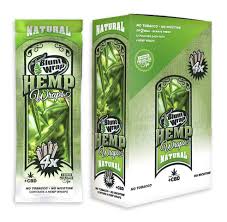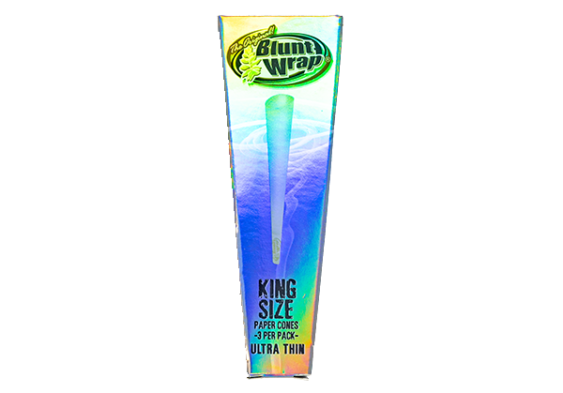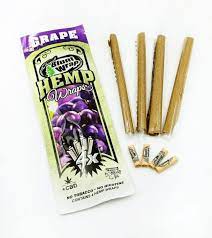How Much THC is in a Blunt: Understanding Potency Levels and the Importance of Knowing How Much THC in a Blunt

Are you ever curious about how much THC is actually in that blunt you're smoking? Figuring out the potency can be a bit of a mystery, but it's crucial for both your enjoyment and safety.
With marijuana legalization sweeping across various states, understanding what you're consuming has never been more important. One interesting point to note: the THC content in cannabis products has dramatically increased over time.
Our blog post will unwrap the layers around THC levels in blunts, from calculating THC concentration to recognizing why these numbers matter for your cannabis consumption experience.
We'll guide you through factors affecting potency and how to control your intake for optimal effects. Get ready to elevate your knowledge!
Key Takeaways
- THC potency in a blunt depends on the cannabis strain, how much you use, and other factors like freshness and storage.
- Safe THC doses range from 5 mg for beginners to up to 50 mg for heavy users. Knowing your limit can help avoid side effects.
- Delta-8 offers milder effects compared to regular THC, while understanding different cannabinoids adds depth to knowing what's in your blunt.
- Your inhalation technique directly influences how much THC gets into your system.
- Being mindful of factors like consumption method and body composition can lead to a safer and more enjoyable experience with blunts.
Understanding THC Potency Levels in Blunts
Understanding THC potency levels in blunts involves recognizing the factors affecting THC content and learning how to accurately calculate it. This knowledge is crucial for safe consumption and avoiding potential risks associated with high THC levels.
Factors that affect the amount of THC in a blunt
Understanding how much THC is in a blunt can be tricky. Several factors play a crucial role.
- Type of cannabis used: Different strains have varying levels of THC content, directly impacting the potency of your blunt.
- Amount of cannabis: More weed means more THC. If you pack the blunt with a lot of cannabis, the THC level increases.
- Blunt wraps themselves: Some wraps might come with additional additives that could affect overall THC absorption.
- Freshness of the cannabis: Fresher cannabis tends to retain higher levels of THC compared to older, degraded material.
- Growing conditions: Cannabis grown in optimal conditions often has higher cannabinoid content, including THC.
- Harvest time: Plants harvested at their peak maturity have maximum potency levels, affecting the THC in your blunt.
- Storage method: Properly stored cannabis maintains its potency better than poorly stored weed.
Every smoker should understand these factors for a better experience when rolling a blunt and gauging its strength and effects.
How to calculate the amount of THC in a blunt
To calculate the amount of THC in a blunt, multiply the percentage of THC in the strain by the weight of the cannabis used. For example, if the strain has 20% THC and you use one gram of it, then there would be 200 milligrams (mg) of THC in that blunt.
It's important to understand this calculation to control your consumption and stay within safe dosage limits.
Once you have determined the total amount of THC in your blunt, you can better gauge its potency and make informed decisions about consumption. This knowledge is crucial for managing potential risks and avoiding adverse effects associated with high THC levels.
Understanding how to calculate THC content empowers smokers to make responsible choices when consuming blunts or other cannabis products.
Why Knowing the Amount of THC in a Blunt Matters
Knowing the amount of THC in a blunt matters for understanding safe dosage and potential risks. It helps users make informed decisions about their cannabis intake.
Safe and recommended dosage of THC
The safe and recommended dosage of THC is typically 5-10 milligrams for beginners or those with low tolerance. For occasional users, a moderate dosage may range from 10-20 milligrams, while heavy users can consume up to 50 milligrams.
It's important to start with a low dose and gradually increase it over time to assess individual tolerance levels and avoid potential adverse reactions.
Understanding the appropriate dosage is vital in preventing adverse effects such as anxiety, paranoia, or impaired cognitive function. Furthermore, following recommended dosages ensures responsible consumption and reduces the risk of developing cannabis use disorder.
Potential risks and side effects of high THC levels
High levels of THC can lead to adverse effects such as increased anxiety, paranoia, and even hallucinations. It may also cause rapid heart rate and potential cardiovascular issues.
These risks highlight the importance of being aware of the potency levels in blunts to avoid overconsumption and its associated side effects.
Excessive THC intake can result in impaired memory, focus, and decision-making abilities. Additionally, it is essential to be cautious as high THC levels can induce vomiting and an uncomfortable sense of disorientation.
Being mindful of the potential risks associated with elevated THC content in blunts is crucial for maintaining a safe and enjoyable cannabis experience while minimizing negative outcomes.
Different Forms of THC in Blunts
Different forms of THC in blunts include delta-8, THC-A, and other cannabinoids. These forms contribute to the overall potency and effects of the blunt.
Delta-8
Delta-8 is a cannabinoid present in cannabis. It's similar to Delta-9 THC but with less psychoactive effects, making it popular among users seeking a milder experience. The keyword "Delta-8" is crucial when understanding the potency levels of blunts and the overall marijuana dosage as it directly impacts the strength and effects of the product.
The emergence of Delta-8 has brought new options for consumers, providing an alternative to traditional high-potency THC products. Its presence in blunts adds complexity to estimating THC content and gauging safe dosages, emphasizing the importance of knowing how much THC is in a blunt for informed consumption.
THC-A
THC-A is the acidic form of THC found in raw cannabis. It doesn't induce a high like THC, but it offers potential health benefits. When exposed to heat, THC-A converts into psychoactive THC, which is what creates the high when smoking or vaping cannabis.
Understanding this process can help you gauge your desired experience when consuming cannabis.
Now let's delve into understanding the different cannabinoids and their effects on potency levels in blunts.
Other cannabinoids
Apart from THC, other cannabinoids in blunts include CBD, CBN, and CBG. These compounds contribute to the overall effects of the blunt, influencing factors such as relaxation, pain relief, and mood enhancement.
Understanding the presence and impact of these cannabinoids can help smokers make informed choices about their cannabis consumption.
Moving forward with our exploration of different forms of THC in blunts will allow us to gain valuable insights into how each element contributes to the overall experience.
How to Influence the Amount of THC Consumed
Inhale slowly and steadily when smoking a blunt. Factors like the number of puffs, length of inhale, and holding your breath afterward can affect THC absorption.
Inhalation technique
When inhaling, take slow and deep breaths to ensure maximum THC absorption. Hold the smoke in your lungs for a few seconds before exhaling to allow the THC to be absorbed thoroughly.
This technique enhances the amount of THC that your body can absorb from each hit, maximizing its effects.
Moving on to Factors that Affect THC Absorption...
Factors that affect THC absorption and consumption
Inhalation technique can significantly impact the absorption and consumption of THC. Factors influencing the effectiveness of THC absorption and consumption include:
- Method of Consumption: The way you consume cannabis, whether through smoking, vaping, or edibles, affects how much THC your body absorbs.
- THC Concentration: The potency of the cannabis product, indicated by the THC percentage, determines the amount of THC your body absorbs.
- Frequency of Use: Regular users may develop tolerance, requiring higher doses to achieve the same effects.
- Body Composition: Individual factors such as metabolism, body fat percentage, and overall health affect the rate at which THC is metabolized and absorbed.
- Strain Variations: Different strains contain varying levels of cannabinoids and terpenes that can affect how THC is absorbed and its overall effects on the body.
- Smoking Technique: How deeply and frequently you inhale when smoking a blunt influences the amount of THC absorbed into your bloodstream.
- Environmental Factors: Surroundings can impact absorption; for example, exercising shortly after consumption might increase blood flow and accelerate absorption.
Remember, being aware of these factors can help you make informed decisions about consuming cannabis products to achieve desired effects while minimizing potential risks.
Conclusion
Understanding the potency of THC in a blunt is crucial for safe consumption. You now have tools to calculate and influence THC levels, minimizing risks and maximizing benefits. Is there a safer way to enjoy your blunt? Consider your inhalation technique and other factors impacting THC absorption.
By understanding the significance of knowing THC levels, you can make informed choices about your cannabis consumption. Applying these practical tips can lead to improved experiences with blunts while keeping safety in mind.
How will you utilize this newfound knowledge? Your confidence in navigating cannabis potency levels has likely grown, opening new possibilities for enjoying marijuana responsibly.
FAQs
1. What does it mean to understand THC levels in a blunt?
Understanding THC levels means knowing the strength or potency of the cannabis in a blunt. It helps you estimate how much THC content is present, which can affect your experience when smoking cannabis.
2. How do I calculate the THC content in a joint?
Calculating the THC in a joint involves considering several factors affecting THC absorption, such as the strain of marijuana and its average potency level. Some products also provide a THC dosage guide for better estimating.
3. What's an average amount of THC found in cannabis products?
The average amount of THC varies greatly among different types of cannabis products, including prerolled cigarettes and other forms used for smoking or vaporizing.
4. Why is measuring how much THC is important when using cannabis?
Measuring how much THCs are present can help users manage their intake and prevent any unwanted effects due to high doses or potent strains.
5. Can methods like smoking or vaporizing affect how my body absorbs the drug's effects?
Yes! The method by which you consume your product - whether that be through smoking or vaporizing - can influence both absorption rates and overall impact on your body.






![Vessel Ash [Black] Ultimate Ashtray and Storage - Headshop.com](http://www.headshop.com/cdn/shop/files/c2410e0d-a3e9-48ea-99bf-f3b0d0d023b6_{width}x.jpg?v=1725551152)
![Vessel Ash [Black] Ultimate Ashtray and Storage - Headshop.com](http://www.headshop.com/cdn/shop/files/96564644-3a7c-45a0-beee-502ebff25cd9_{width}x.jpg?v=1725551144)



















